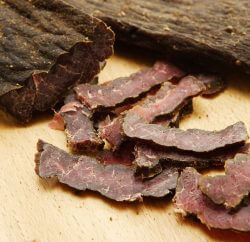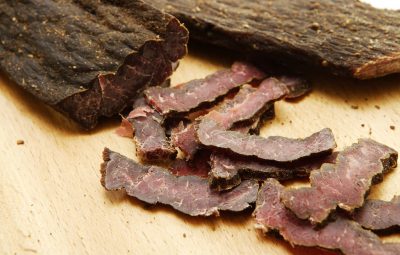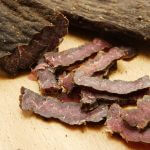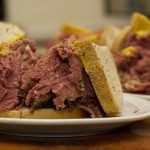When you Google “Origins of Coffee” you get over 8 million results. That’s quite a number but the interesting thing is there are different opinions about the topic. You can see them when you click on the results, right on page 1, that usually has the most interesting results. Various sources claim coffee to be discovered around the 5th century, or the 13th century, depending which story you trust most.
The history of coffee has another big variety, on topics like the way to prepare coffee and the bean source. Just to show how deep the love and passion for coffee is. This sort of debate fits the beverage very well since coffee is known for starting provocative thoughts and intellectual debates. The roots of coffee houses being a good place to freely exchange ideas and have political conversations in the Ottoman Empire in the 16th century are historically correct.
But this is going too fast… Let us go back for a shortened lesson in coffee history. Who knows, you may like your next cup of coffee even better!
Kaldi the goat shepherd
Many Google results tell the tale of the Ethiopian shepherd Kaldi who observed the strange way his goats were behaving after they ate the leaves and fruits of a bush. The animals were joyfully jumping around, full of energy. Kaldi got curious and tried this fruit for himself and felt very energetic afterwards. Some sources put the tale (whether it is real or not, who knows) around the year 850.
What we do know is the coffee plant comes from Ethiopia, from a plateau since it spontaneously grows there like nowhere else. The region of this plateau is called Kaffa. Did coffee take the name from that region or was it the other way around? There is no clarity about that. It is a short leap however to believe coffee was first drunk on a wide scale in Ethiopia and calculate roughly when that would have been. Uhuh.. not that easy, not so fast. We cannot tell for sure in either case.
Since there is no documentation on this aspect of the history, I developed a theory of my own. Imagine an ancestor of ours (thousands or maybe even millions of years ago) almost dying of starvation, wandering around in what we now call Ethiopia. He is desperately looking for something to eat and runs into this bush that is bearing a lot of red fruit. Are these fruits edible? He doesn’t know but he has little choice. So he picks a red fruit that looks like a cherry and put it in his mouth. The fruit has no flesh, but two beans inside…
The beans taste kind of sweet, which means it could be nutritious in some way. He thinks: maybe this is okay, who knows. So he goes on eating the fruit till he is full. And he then realises he is not just full, but also relaxed and awake, his reflexes active. At night he cannot fall asleep. The man likes all the sensations he experienced that day so he decides to go back to that bush and bring his people this fruits. It is very well possible that from that moment on coffee is in the diet of his tribe, although maybe not yet as a beverage like we know it.
Hot black liquid
Fantasy? There are some real links to this story found in an Ethiopian tribe called the Galla. People in that tribe regularly eat so-called energy balls that are made of a blend of animal fat and wetted coffee cherries. Bottom line of the history of coffee is that those who took it ages ago did so for the same reason we do, for the stimulant we call now caffeine. Each and every coffee legend tells about the energising effect coffee has, from Kaldi’s dancing goat
to the prophet Mohammed who got a hot black liquid from the angel Gabriel and, after drinking it, got 40 knights off their horses and satisfied 40 virgins in just a day’s time. (Did anyone say Viagra?)
To keep the monopoly, the Arabian coffee traders ‘spoiled’ export coffee beans on purpose to make them infertile, by burning or boiling them before they were shipped to Europe. The first person we know of who wrote about coffee was a physician from Persia named Rhazes or Razi (850 – 922), who called it a medicine. The beverage he wrote about was ‘bunchum’, made with a fruit called bunn – which in fact is the Ethiopian name for the coffee cherry. There are other early writings on coffee in which Yemen, just across the Red Sea from Ethiopia, was supposed to be the first with coffee plantations early in the 15th century. The plants came from Ethiopia since Yemen had no original coffee plants of its own. Sufi monks prepared a beverage of coffee cherry leaves to stay awake for praying all night long. The first roasting and grinding of the coffee most likely took place in Yemen as well.
The real worldwide trade in coffee started when the Turks conquered the Arabian Peninsula in the early 16th century. The Ottoman Empire took coffee to totally new regions, for a specific reason.
Wine of Arabia
Muslim religion forbids muslims to drink alcohol and coffee became very popular in Turkey and the other regions of the Ottoman Empire. Coffee replaced wine and got the name kahve – which literally means “wine of Arabia”. The word stems from the Arabic ‘oahwah’, itself from the verb ‘oahiya’, which means one is feeling satiated.
Coffee spread fast through the Ottoman Empire, and thus the first coffee houses were born, called ‘kaveh-kanes’ or ‘oahveh-khaneh’. The first coffee house which has been documented opened in 1554 in Constantinople (Istanbul), but who knows there may have been others far earlier in cities like Cairo, Damascus, Mecca, and Medina.
In the early years of the 17th century Christian Europe got introduced to the coffee, thanks to Venetian merchants. The “Muslim drink” was strongly opposed by the Catholic Church, specifically bij the councilmen of the Pope who urged Pope Clemente III to condemn the black drink as a “bitter invention of Satan”. The pope decided to taste the beverage first before condemning it. As he liked what he was drinking he declared the “devil’s drink so delicious… we should cheat the devil by baptising it”.
The dispersion of coffee through Europe went as fast as you can imagine – in those days. The first coffee house in Venice (bottega del caffe) opened in 1645, in England in 1650, in France in 1672 and in the New World, in Boston to be precise, the first coffee house opened in 1676. So today’s fast opening of coffee houses everywhere… nothing new here, except for getting free WiFi with your beverage.
Persistent Dutchmen
Coffee became a precious item and the coffee plants were very popular. European countries like France and Holland who had colonies overseas tried to grow coffee in their territories, far from the Arabian Peninsula where it was known to grow the best. (Almost all coffee we consume today is produced in tropical regions). The Arabs tried to monopolise their coffee making the beans infertile before they were exported to Europe.
The Dutch were persistent in their efforts, they had gotten some coffee plants and created the first successful coffee plantation far away from the Middle East. The plantation was on the island of Java, Indonesia in the beginning of the 18th century. The few plants they started with the Dutch had gotten through trading business in the port of Mocha (Yemen). Thus Mocha Java was born, the first shipment of this coffee variety to Europe took place in 1719.
After the success of the plantation on Java, the Dutch established coffee plantations on Sumatra and Ceylon as well. Some of the plants were cultivated in botanical gardens in Amsterdam that were especially created for this task. France got some of these plants as a gift in 1720, as part of a military agreement. These plants were quickly transported to their colonies in Central America. King Louis XV ordered a captain of the French navy, Gabriel de Clieu, to create a plantation on Martinique. According to the tale the water got rationed during the long journey and the captain shared his portion evenly with the plants. Recent discoveries however show coffee was already being cultivated in the French colony of Saint-Domingue as early as 1715 and since 1718 in the Dutch colony of Surinam.
The tropical regions of the New World proved to be ideal for coffee cultivation and many plantations were established throughout Central and South America. The first harvest in Central America was in 1726. Now it is Brazil that can call itself the biggest coffee producer of the world with no less than 10 billion coffee plants.
The modern history of coffee, with a lot of innovation, scientific findings and commercialisation on a large scale is a story on itself. Think of the home coffee machines and pods from Tassimo, Nespresso or Dolce Gusto. Let us save that for another moment. I suggest next time you drink a cup of coffee, you think back for a minute of Kaldi and his hyper goats.


















